10 best features of Google Workspace for small business
We explore the 10 best features of Workspace, formerly known as G Suite, for small business owners
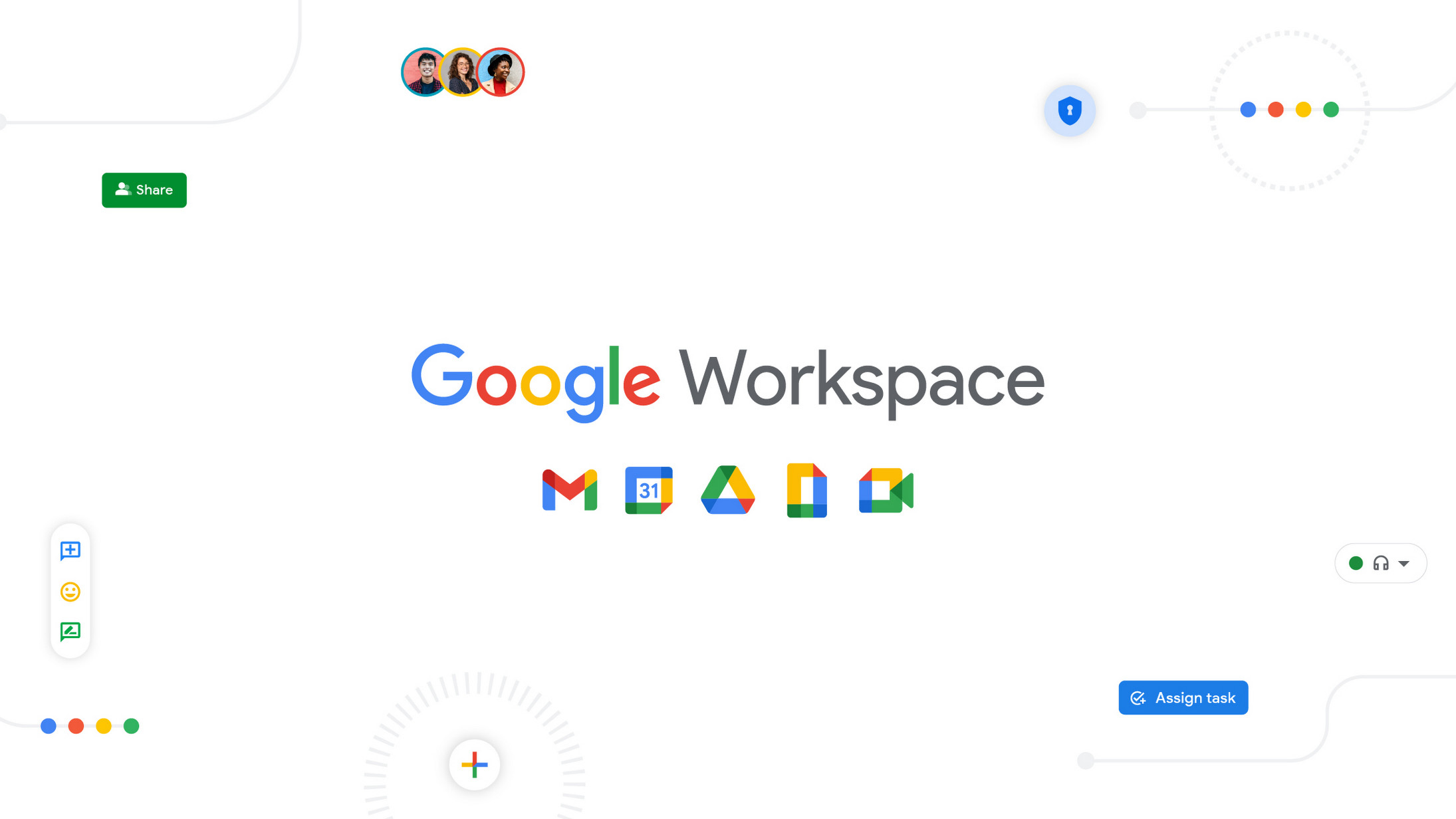

The rise of remote work and the ever-evolving office landscape mean small businesses need to be flexible. As a result, many organizations now have as many employees working remotely as they do on the premises.
Thankfully, Google Workspace offers a cloud-based solution packed with features that cater to small businesses with hybrid teams.
Workspace is Google’s suite of cloud computing and productivity tools allowing team members to share documents, collaborate on projects, join meetings remotely, and much more.
This article dives into the top ten features of Google Workspace, previously known as G Suite, for small businesses and employees, as well as explaining why it stands out as a strong alternative to Microsoft Office.
1. Gmail – AI-enhanced email service
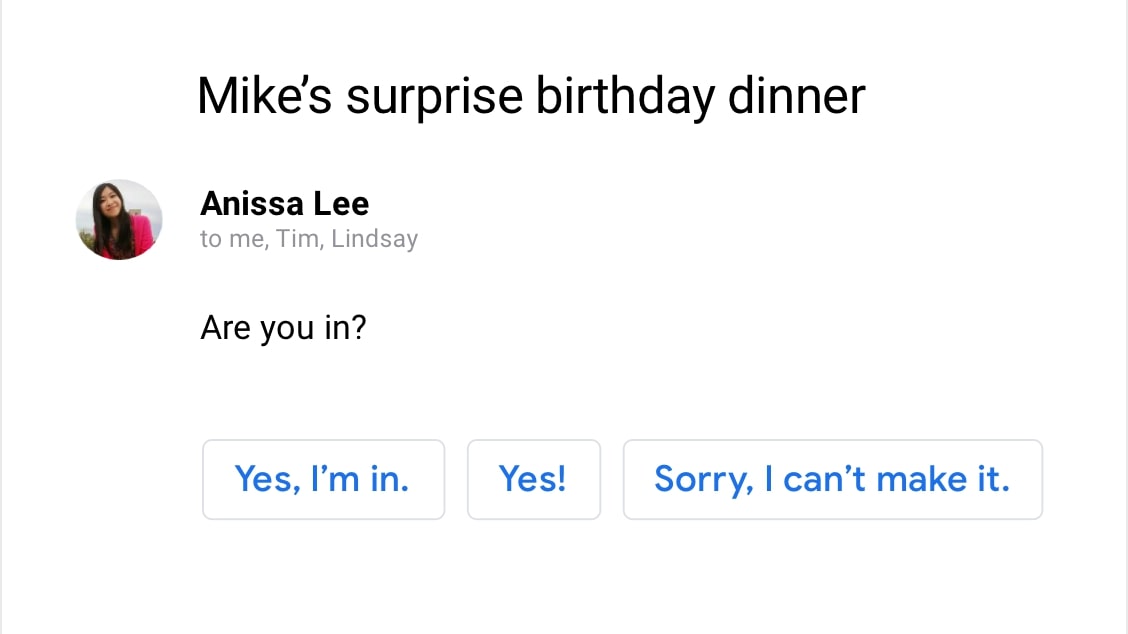
While the standard Gmail service offers a robust set of features for individuals and businesses alike, including spam filtering, customizable filters, message scheduling and snoozing, and a handy right-click menu, the Workspace version of Gmail takes things a step further for businesses.
Gmail is not an island within Workspace. It integrates seamlessly with other tools like Google Calendar and Google Chat. Schedule meetings directly from an email or jump into a quick chat with a colleague about a project without having to leave your inbox.
Because this is Google we are talking about here, of course algorithms are included in the package to help you automate manual tasks. Smart Reply and Smart Compose can save you having to write out every word of an email, with grammar suggestions to ensure your messages are free of typos.
We rank Gmail among the best email providers out there, read our Gmail review for more details.
2. Drive – Secure cloud-based file management
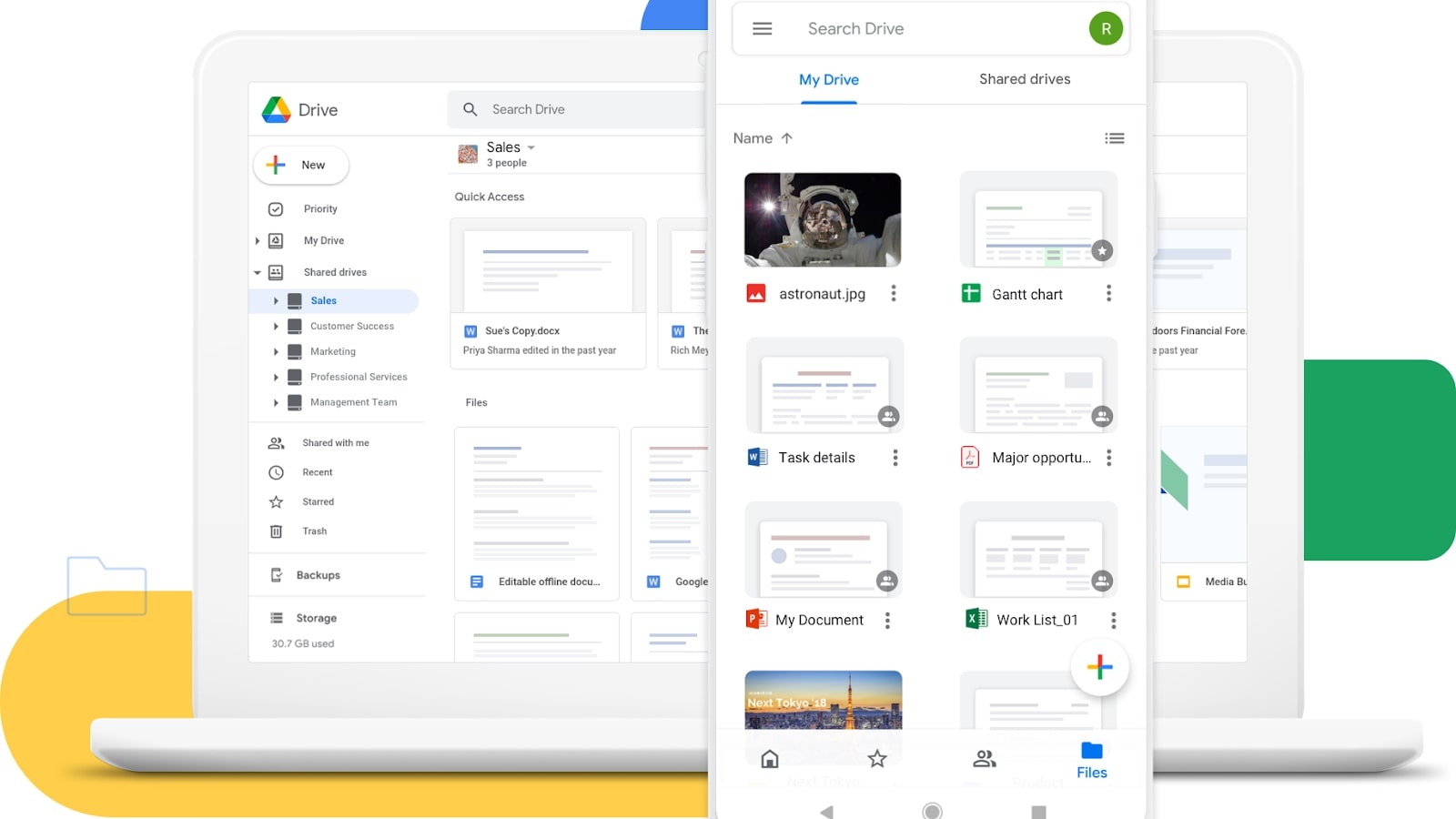
Drive is Google’s cloud storage service, offering users quick and secure access to their Workspace-based files wherever to their Workspace-based files. Drive’s business focused tier, the Business Starter package, provides customers with an initial 30GB of storage space per user. The Business Starter tier expands this to 2TB per user, and Business Plus gives you 5TB.
One thing to note is that with each of these packages, the stated storage capacity is pooled together and shared across all users at the organization.
For when you need to collaborate with team members, shared drives allow users to organize files and projects with a wide range of access and permissions configurations. To learn more about Workspace’s cloud-based storage option, check out our Google Drive Review.
3. Docs – Smart word processing
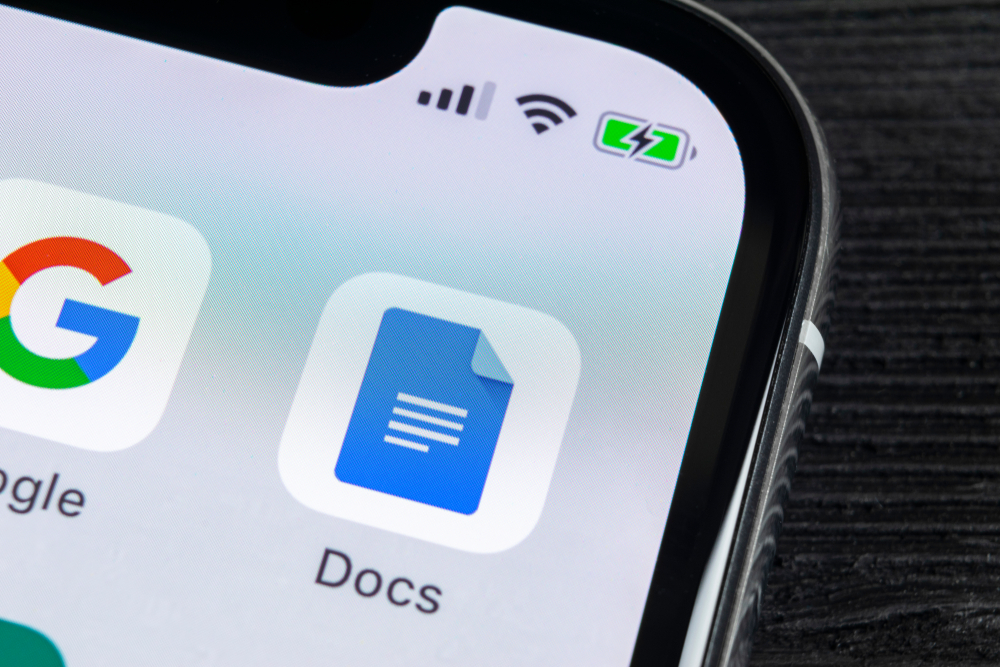
Docs is Google’s web-based word processor, part of its Editors office suite that also includes Sheets (for spreadsheets), Slides (for presentations), and Forms (for surveys). At the heart of each service is the concept of real-time collaboration, with 10 people able to work on documents at the same time and up to 200 permitted to view simultaneously.
Version history helps track changes by users, meaning that edits can be easily reversed. The blue Share button in the top right of the screen sets permissions on who can view the document while also providing a link for anyone to read the document. Crucially, the suite’s various apps can open and edit file formats from the equivalent Microsoft services.
4. Calendar – Integrated video conferencing
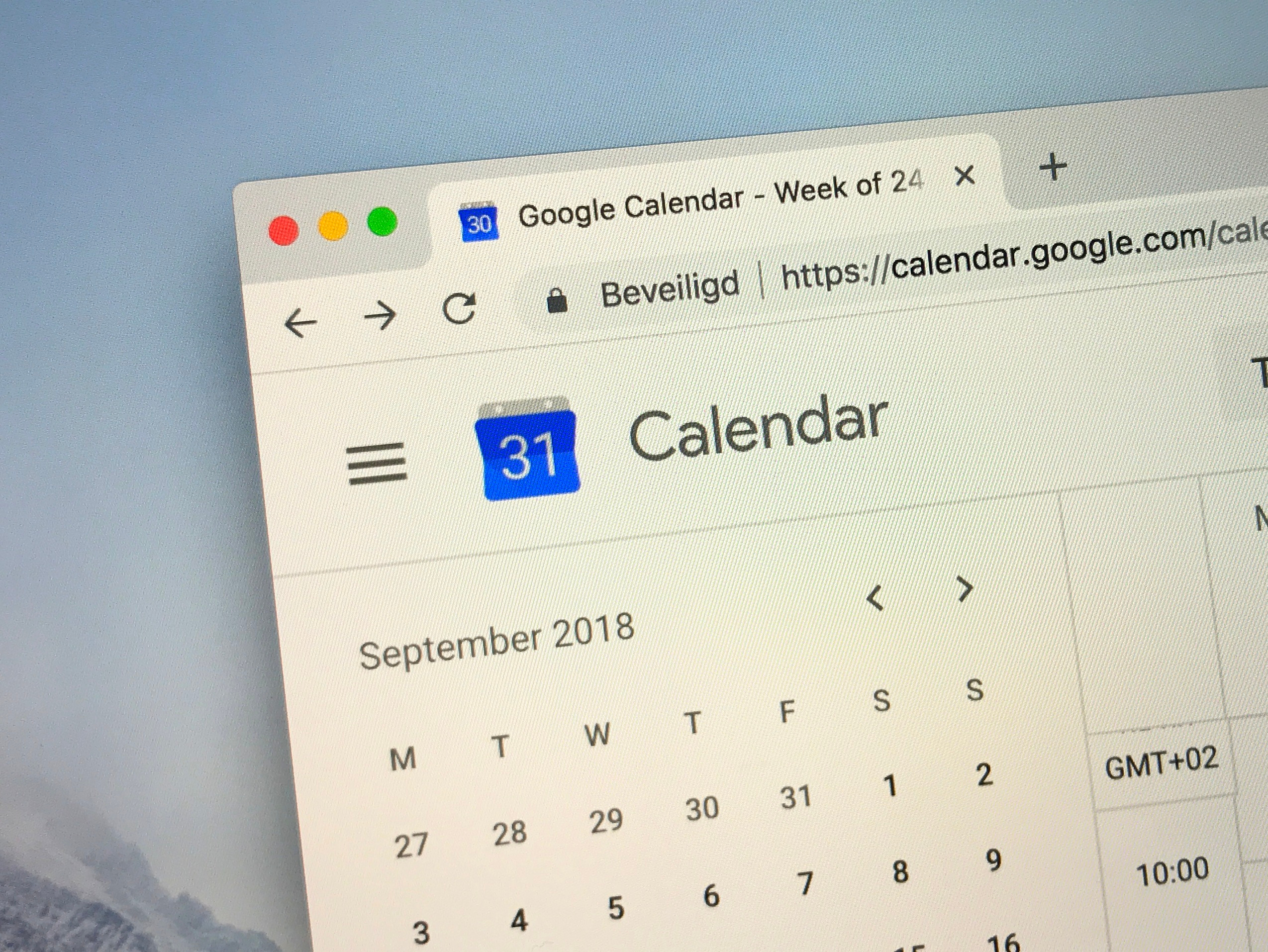
Designed to integrate seamlessly with other Workspace tools like Gmail, Drive, and Meet, Calendar gives employees the ability to not only stay on top of their own diary, but get oversight on the availability of their colleagues.
Along with day, week, month and year view, Calendar also presents the handy option of displaying a user’s full schedule, listing all upcoming events on one scrollable page.
To put a date in the diary, simply hit the 'create' button; select whether you're adding an event, task or reminder; and then fill in the rest of the information. You'll see that this includes the ability to add guests and location, along with the option to integrate video conferencing.
5. Work Insights – Digestible business analytics
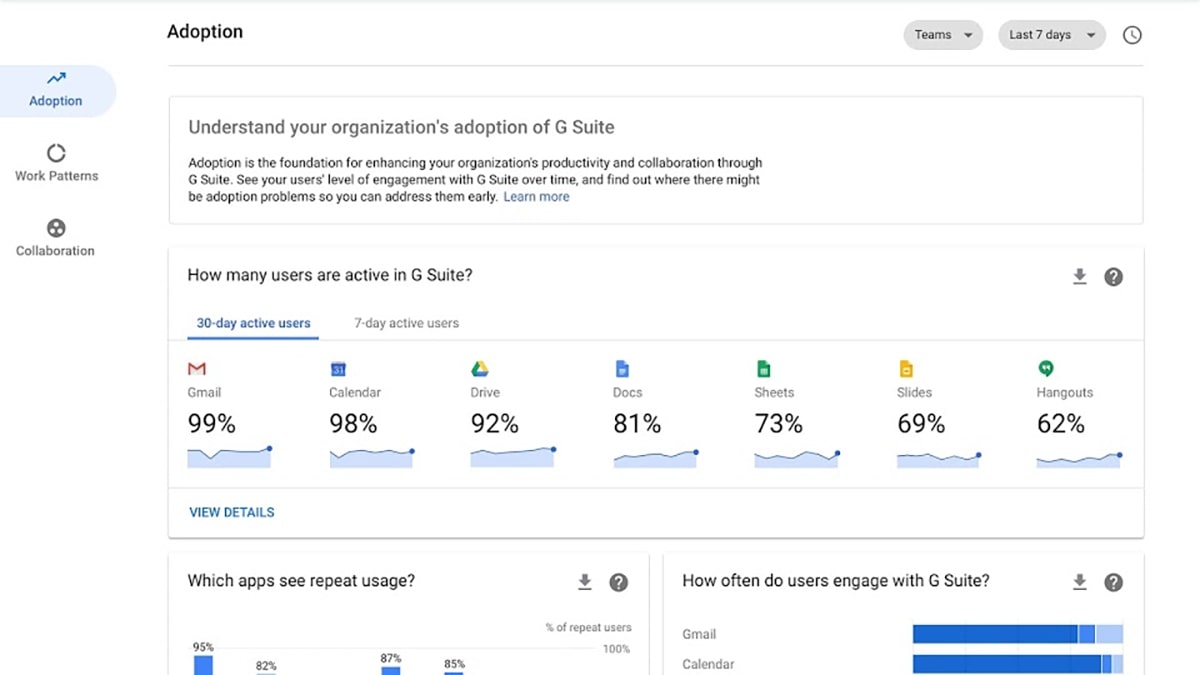
Every good business needs detailed reporting, and Work Insights is one Workspace feature that should not be overlooked. Whether for a manager, IT administrator or HR officer, Work Insights can be useful to provide oversight on how staff are performing and engaging with Workspace.
Using charts and data that will seem second-nature to anyone familiar with Google Analytics, Insights can provide information on levels of adoption, collaboration and productivity.
The reporting can also show service-specific data, making it easy to spot staff preferences. For example, it might highlight that while 98% of staff appear happy using Gmail, only 67% are regularly using Sheets.
6. Apps Script – Low-code automation
Apps Script is your secret weapon for automation and one of the most underrated products within Google’s productivity suit. Apps Script is a low-code development platform built into Workspace, allowing you to create custom solutions without needing a dedicated programmer.
Businesses can use Apps Script to help synergize other applications services within Workspace. Users can use Apps Script to write custom functions for Sheets and integrate it with other Google services such as Calendar, Drive, Forms, and Gmail. For example, a script can turn submissions in Google Forms into new tasks in Sheets.
Repetitive tasks that normally bog down staff can be easily automated, such as automatically sending follow-up emails, formatting data in Sheets, or generating reports.
Businesses can leverage Apps Script to build simple web apps for a wide variety of purposes including order tracking, onboarding, or project management, all within Workspace.
7. Vault – Easy audit report generation
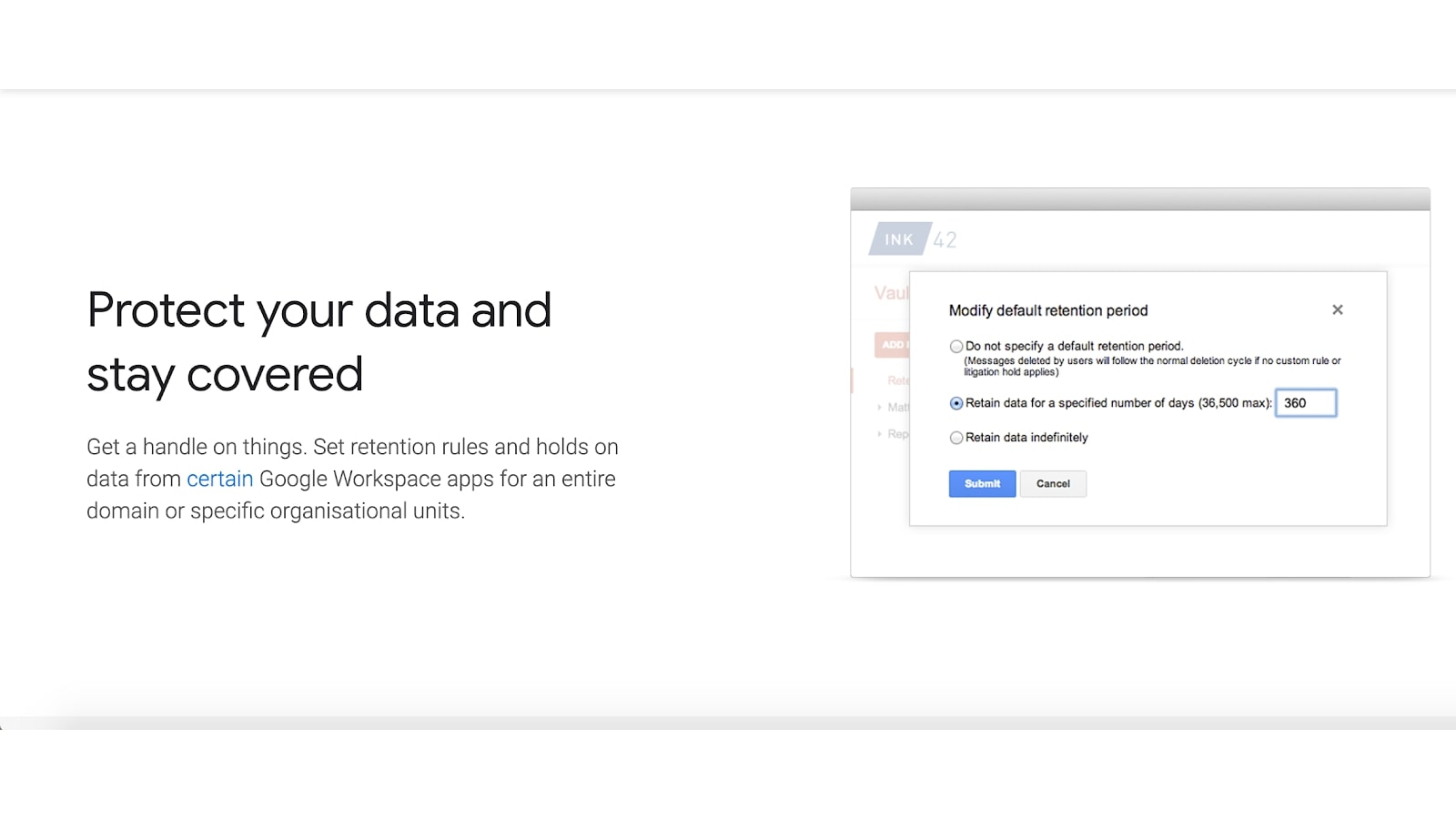
Vault is Google’s archiving service, which helps businesses navigate the complex and ever-changing world of data policy.
One of the first tasks for Vault users is to outline retention policies that will determine which users can access what data, and how long it will be stored, based on the requirements of your business.
Vault can also be used to compile audit reports, as well as exporting content into a range of formats. Unsurprisingly, Vault’s search capabilities are highly sophisticated, enabling users to search by file type, user, date and keyword.
8. Chat – Private rooms of up to 8,000 users
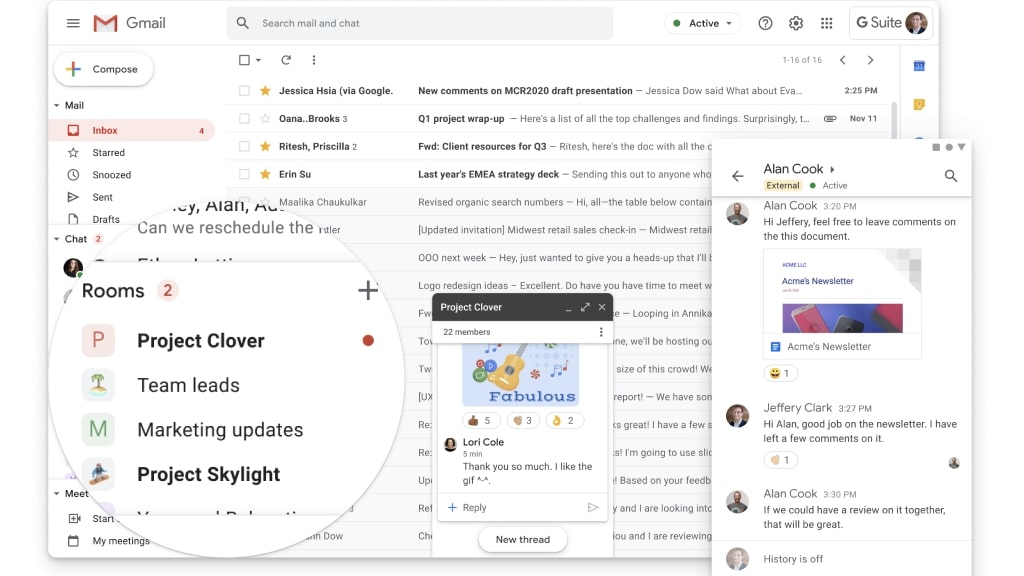
Google Chat, along with its video equivalent Meet (see below), has replaced Hangouts as Google’s main business messaging tool.
Giving users the ability to directly message contacts, the service can be used to send private messages to a single person, or to a wider group via the room function, which can support external users and up to 8,000 members. Users can access Chat via a standalone app or directly through Gmail.
9. Meet – Video conferencing designed for presenting
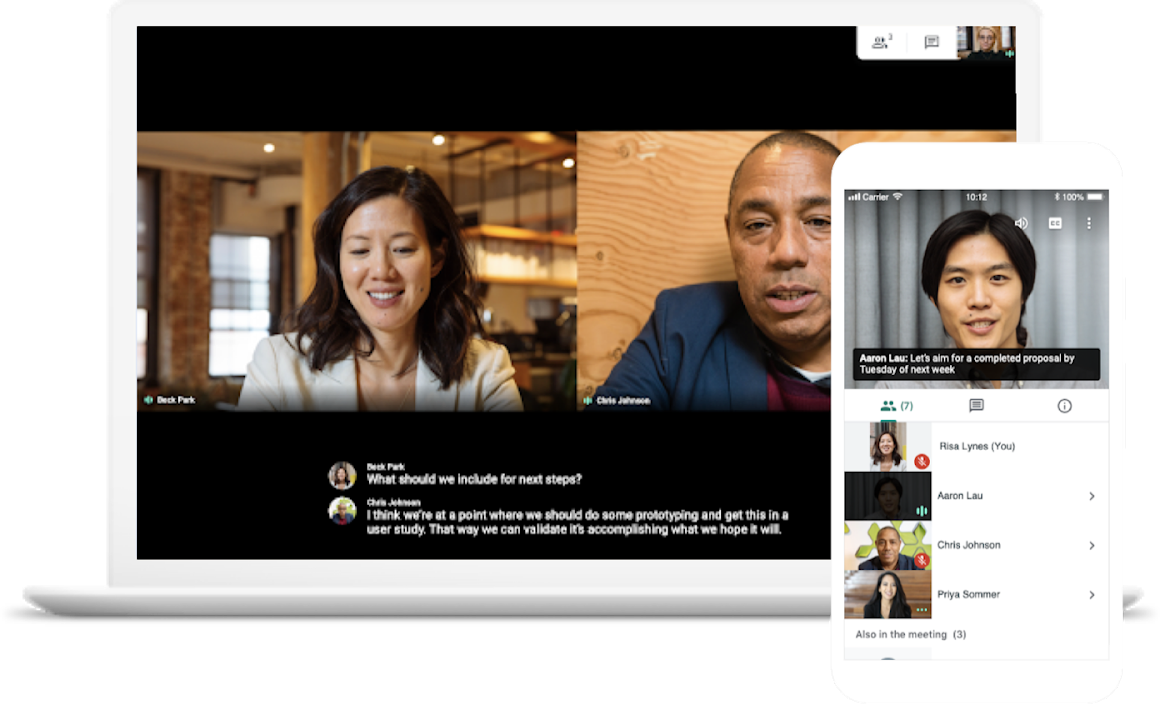
Video conferencing has taken on a renewed level of importance in business, as remote working transforms from a niche perk to an established workplace norm.
Meet is Workspace’s video meeting service, and is an intuitive and easy-to-use application that works seamlessly with other Workspace tools, meaning you can join a Meet directly from Gmail or Calendar.
All video meetings are encrypted for added security, include screen-sharing and presenting functions, and feature adjustable layout settings. What’s more, the Enterprise edition comes with a maximum of 250 participants, and even includes dial-in phone numbers for those unable to join via the link.
10. Endpoint – Easy integration with personal devices
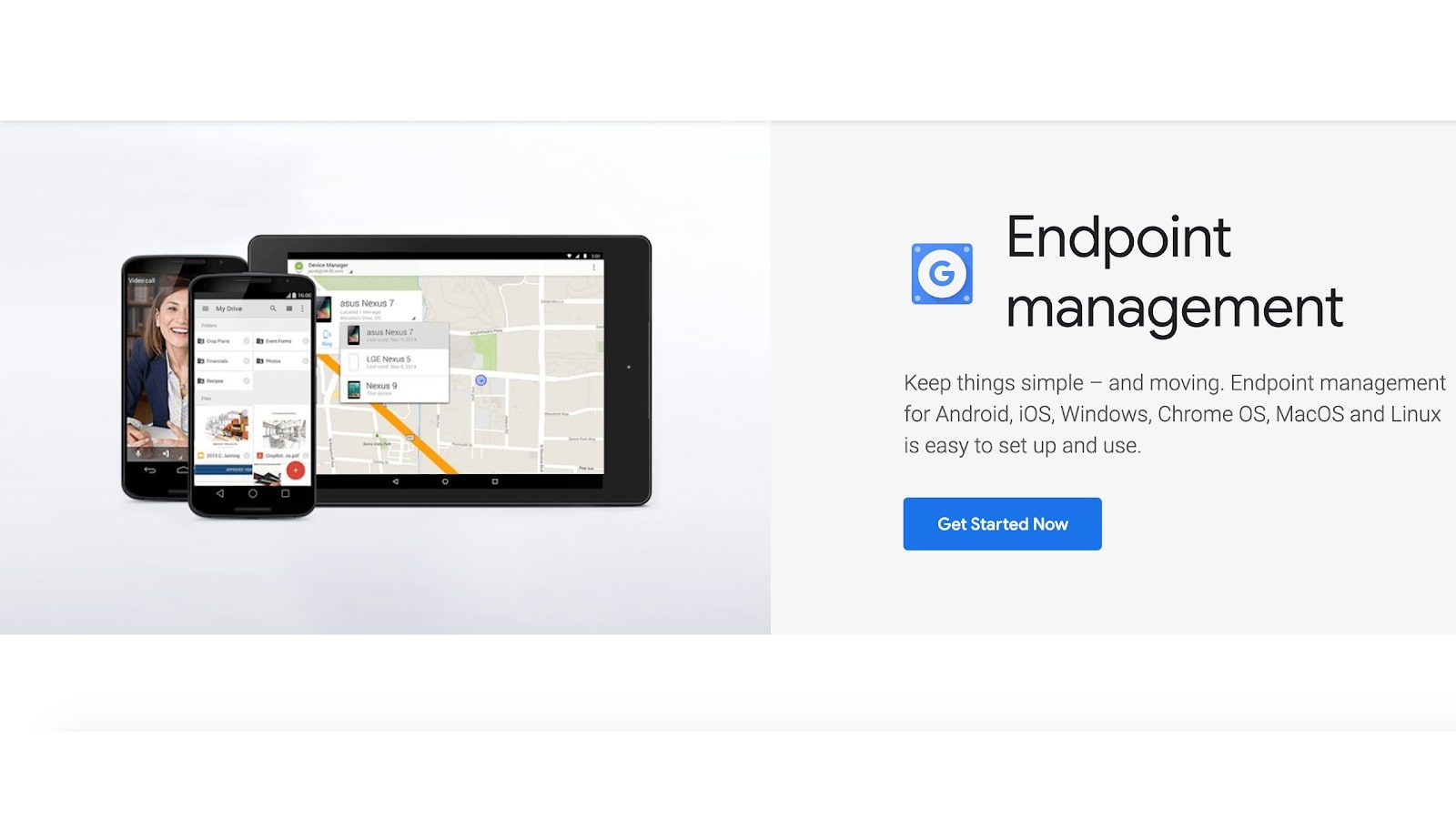
Endpoint may not enjoy the fanfare of some higher-profile Workspace services, but for businesses it can prove to be a vital feature. Intended to keep your data secure, Endpoint monitors and manages all devices registered with the company. Security requirements can be tailored to company policy, such as requiring strong passwords of certain lengths and characters.
Handily, employees wishing to use their own personal devices for work can do so without risking security breaches thanks to Endpoint’s ability to work on a bring-your-own-device (BYOD) basis. Crucially, devices can be locked and even wiped in the event of loss or damage.
Summary
Now that you’ve read about some of the top features of Google Workspace, you may wish to read up on other useful tools and services for small businesses. With that in mind, check out our reviews of Microsoft Teams and OneDrive.
Get the ITPro daily newsletter
Sign up today and you will receive a free copy of our Future Focus 2025 report - the leading guidance on AI, cybersecurity and other IT challenges as per 700+ senior executives
Alexis is a freelance writer and journalist from the north east of England. His love for creative technology stems from the day he was gifted his first ever digital voice recorder (a beloved Olympus WS 110), which brought with it the wonderful realisation that he'd never again have to rely on his iffy shorthand…
-
 Bigger salaries, more burnout: Is the CISO role in crisis?
Bigger salaries, more burnout: Is the CISO role in crisis?In-depth CISOs are more stressed than ever before – but why is this and what can be done?
By Kate O'Flaherty Published
-
 Cheap cyber crime kits can be bought on the dark web for less than $25
Cheap cyber crime kits can be bought on the dark web for less than $25News Research from NordVPN shows phishing kits are now widely available on the dark web and via messaging apps like Telegram, and are often selling for less than $25.
By Emma Woollacott Published
-
 The race is on for higher ed to adapt: Equity in hyflex learning
The race is on for higher ed to adapt: Equity in hyflex learningWHITEPAPER Fulfil student and faculty needs
By ITPro Published
-
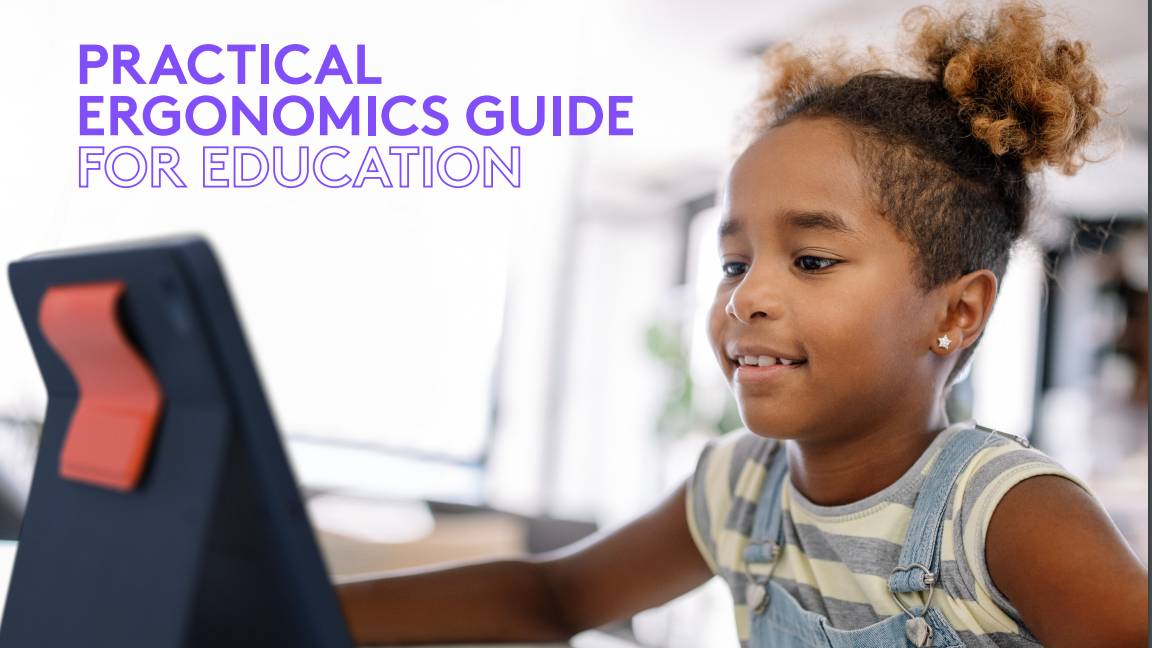 Practical ergonomics guide for education
Practical ergonomics guide for educationWHITEPAPER Save energy, focus, and promote overall well-being
By ITPro Published
-
 How to manage – and mitigate – performative working
How to manage – and mitigate – performative workingFeature An increasing number of people are putting on a show of working, rather than actually getting on with it
By Peter Ray Allison Published
-
 The ultimate guide to 3D
The ultimate guide to 3DWhitepaper Creative boost breaks
By ITPro Published
-
 Developing an end-to-end process for virtual photography
Developing an end-to-end process for virtual photographyWhitepaper Sharing the best practice of creating production-quality photographs with software
By ITPro Published
-
 Breaking down the barriers to 3D design
Breaking down the barriers to 3D designWhitepaper Designing for the future
By ITPro Published
-
 IDC: The business value of IBM Maximo
IDC: The business value of IBM MaximoWhitepaper Integral to the transformation of asset management
By ITPro Published
-
 UK's four-day week trial ends, leads to reduced burnout and sick days
UK's four-day week trial ends, leads to reduced burnout and sick daysNews Organisations reported overwhelmingly-positive results from the world's largest trial of this kind
By Rory Bathgate Published